![]() The impact of technological change on moral
virtues.
The impact of technological change on moral
virtues.
Between 1790 and 1890 pastoral & agrarian values gave way to urban and industrial mores throughout Western Europe and America; these behavioral responses to rapid technological change were profound, widespread, and unprecedented.
concepts | examples of triggers | revolutionary techniques | land as valuable | meanings changed | errors | commerce| values
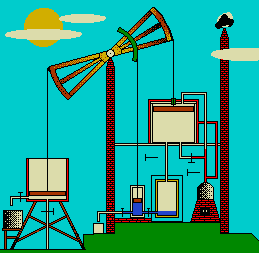 Technology is far more than meets the eye. Even ordinary tools are not so obviously simple to explain. The study of tools and technological development is confusing because Pacey
says every technology has three dimensions (like every room has cubic dimensions) and Pursell says
that technology has changed its meaning and by
its identification with powerful people over time, the promise of technology to
solve certain insurmountable problems has often lead to unsustainable, if not
dangerous oversights with mortal consequences.
Technology is far more than meets the eye. Even ordinary tools are not so obviously simple to explain. The study of tools and technological development is confusing because Pacey
says every technology has three dimensions (like every room has cubic dimensions) and Pursell says
that technology has changed its meaning and by
its identification with powerful people over time, the promise of technology to
solve certain insurmountable problems has often lead to unsustainable, if not
dangerous oversights with mortal consequences.
Pursell suggests that technology is complicated because it has four related characteristics (reasons for complexity) that influence all inventions, use, dispersal and adaptive alterations in certain tools. One characteristic of tools is that they solve specific problems only to create new unexpected difficulties. Successful technological developments require coordination among related tools and often reformulates other implements. Unless there is a convergence among related tools and social institutions, technological progress can become stalled. The consequences of new inventions are frequently so unexpected as to disturb the social order by rearranging the centers of wealth and the core productive centers in affected societies.
He also argues there are three common errors in describing the complexity that arises in the history of technology from the changing relationship of research science to practical use of tools.
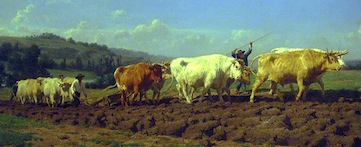
![]()
concepts | examples of triggers | revolutionary techniques | land as valuable | meanings changed | errors | commerce| values
![]()
|
Examples of complexity |
|
| reason for complexity | tool complexes and triggers of change |
|
Convergence |
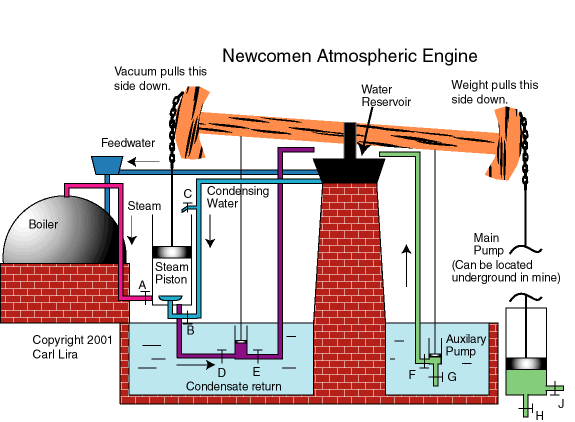
|
|
Problem Solving |

|
|
Impacts |
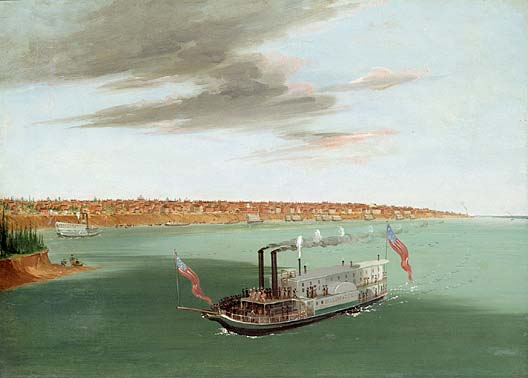
|
|
Labor |
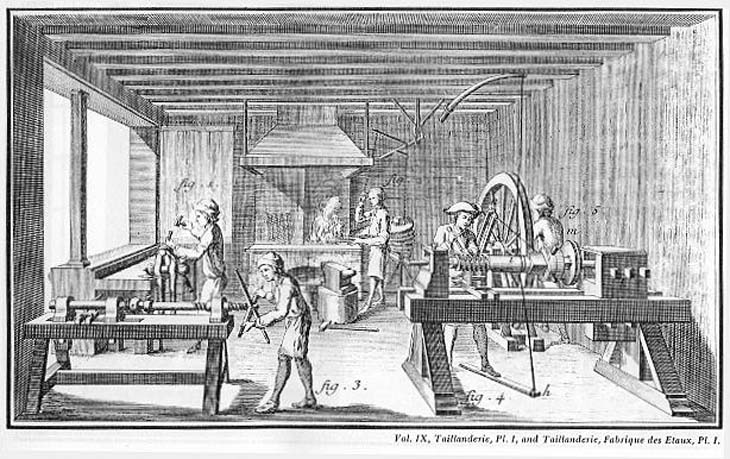 |
![]()
concepts | examples of triggers | revolutionary techniques | land as valuable | meanings changed | errors | commerce| values
![]()
Leo Marx has constructed a metaphor to explain the flood of inventions that were created during what Alfred North Whitehead called the Century of Invention, in that the discovery of the means of invention created volatile changes in life during the period from 1800-1899. Marx referred to the proverbial "steam engine's revolutionary" potential as "the Machine in the Garden." By this he meant two things based on older images of technological change.
1) The machine in ancient Greek plays is a device used to literally lower a god or goddess on to the stage at the end of a play to reconcile conflicts and thus mediate or solve a problem posed by the action of the performance. This idea was called Deus ex machina.
2) The Garden of Eden –reflecting Babylonian influences through Biblical sources widely influential in Catholic and, especially, Protestant Europe and America– was for many, the description of the original condition of humans on earth. Set in a tended garden humans were innocent in this "state of nature" awaiting divine intervention to guide and structure their lives. Social values were shaped by this sense of "paradise lost" but were accompanied by the belief that the garden could be redeemed by either humanity's good works or further divine salvation through revelation.
God, especially after Kepler's, Boyle's and Newton's laws, was seen as a divine lawgiver and original craftsman of the cosmic clockwork revealed by these universal gravitational laws of motion and acceleration.
Concepts that reveal the power of invention to alter social values:
√ Convergence
the coming together of related tools or ideas related to tool use to form a new technology altogether: such as coke-fired furnaces, wrought iron, steam engines, steel beams, and carriage making.√ Problem Solving
“Standardization is the solution of last resort, an admission that we cannot solve the problem in any other way.” page 137.This may include exaptation or the coming together of two or more very different technical artifacts, practices, and ideas, to achieve an unintended purpose that is different from each of the original components.
Hence the use of tools originally intended for one purpose is applied or adapted to handle a totally different problem. For instance: the gears needed for clocks were available for use in the automation of textile (cloth) spinning, weaving and manufacture. Similar gears were used in the production of paper and printing.
√ Impacts
the influence that tool use has on people, places, other things and our perception.
This includes Pacey’s dimensions of technology practice and experience. p. 8.√ Labor
The means adopted to produce the technology, techniques, and technical systems workers use, how people implement the tools, and the behavior required in order to make these tools bring about the desired results.√ Values
Any of a set of standards or separate code of acceptable behavior. The common expectations exhibited by a group of people that informally or formally regulate their daily relations to one another, their communities, and their means of making a living. The result of moral imagination, training, experience, or legal sanctions imposed by a group on individual expression (social norms).
technology in 1615, & science in 1660 did not refer then to what they refer to today.
Pursell, page 121.
![]()
concepts | examples of triggers | revolutionary techniques | land as valuable | meanings changed | errors | commerce| values
![]()
This phrase has become a matter of faith in industrial society with little evidence for the influence of research science on technology and ample evidence of the impacts of technology on research science's findings.
This expression of a secular faith, or what amounts to an article of dogma of our civil religion, persists despite the prevailing view of the respect organizations pay to R&D or research and development. By this we mean that much of these research findings is never capable of development.
In hypothesizing about ties of science and technology, Pursell detects an inversion in the meanings of technology and science from 400 years ago until today.
|
ETYMOLOGICAL
confusion between |
||
| words | Technology, (techne) | Science, (skei) |
| Then: | 1615 | 1660 |
| discourse on the arts | trained skill requiring a TRADE or CRAFT | |
| Mid 19th century: | useful arts | natural history and philosophy |
| And Now: | Applied science | knowledge of natural laws |
| Practical use of discoveries | means of discovering new knowledge | |
| difficulties with terms | defining the word technology | defining the word science |
![]()
concepts | examples of triggers | revolutionary techniques | land as valuable | meanings changed | errors | commerce| values
![]()
Pursell argues that “the power to define is the power to control” because the arrangement of words is deeply POLITICAL.But Pursell also warns that by misunderstanding the relation of knowledge to practice, or science to tools the power to control is illusive, or can be lost by not paying attention to how tools operate properly within a system of social constraints.
p. 121.
ANTIQUITY – mind versus hands to do work
p. 120.
Plato had honored thought over action; ideas were more important than practice.p. 121.
p. 120.
THALES – ARCHIMEDES – GALILEO – LAVOISIER,
These men's discoveries are intimately linked. Therefore science and its application [technology] are intimately linked.
Note – juxtapose ‡ to set side by side:
Daedalus means – knowing hand + able mind
Icarus means – having ambition, hubris, the mind overrides restraints
concepts | examples of triggers | revolutionary techniques | land as valuable | meanings changed | errors | commerce| values
By the 19th century a deep chasm emerged between TOOLS and the MEANS OF KNOWING the world.
As this x-ray reveals, there exist universal forces beyond our sensory awareness. This means that technology in the 19th century was largely unaware of three fundamental universal forces until scientific studies of electricity revealed the depth of human misunderstanding of the material structure of the universe.
In the late 19th century, despite assurances to the contrary, remarkable discoveries of unseen, or less tangible aspects of material reality forced chemistry and physics to throw out older ideas and to adopt a radically different view of atoms, magnetism, action at a distance, the speed of light, aether waves, and transmutation of some elements.
concepts | examples of triggers | revolutionary techniques | land as valuable | meanings changed | errors | commerce| values
Technological disappointments reveal limits to material and functional capacity of inventions.
First criteria of your project: know when the technical capability fails to keep up with the promise of the technological projections to solve a serious problem.
When the idea or the concept (easy to visualize aspect of a technical apparatus from which a prototype is constructed) gets too far from the knowledge gained from mathematical models & practical shop floor experience, you can end up with expensive, inefficient, and often unnecessary inventions, such as:
- Space shuttle, "O" ring seals, heat shields, become brittle at extremely low temperatures.
- Anglo-French, Supersonic airplane: Concorde, destroyed the upper atmosphere.
- Britain, 1906, the Titanic, was unsinkable, the steel was embrittled.
- Medieval Europe, Cathedral domes & the "Beauvais Syndrome," the dome collapsed.
For automated technology to be successful, people need to be smarter and to think more quickly and systematically about unexpected consequences and how to compensate for technical failures.
- Necessity of functionally effective back-up systems.
- Need for adequate insurance coverage.
- Importance of preventive maintenance.
- Requisite knowledge of troubleshooting.
- Institutionalized help-desk for error monitoring and review.
Comprehensive knowledge now has become the paramount virtue with respect to technical change.
To what extent these many behavioral changes that accompanied mechanization, industrialization, and automation are enduring remains to be seen.
Pursell, pp. 118-143.
concepts | examples of triggers | revolutionary techniques | land as valuable | meanings changed | errors | commerce| values
Pacey: World Civilization | Pacey: Meaning in Technology | Pursell: White Heat
Tools of Toil: what to read. Tools are historical building blocks of technology.
Last Updated on 9-18-04 and 8/15/2007.
By Joseph Siry schedule | Home | Atlas | site-map | Ecology | laws | quick look
Science Index | Site Analysis | Population Index | Global Warming Index | Nature Index | Research sites.
Terms | Glossary | Word webs | Basic vocabulary | Advanced Vocabulary | Antonyms | Synonyms
Writing | Interviews | Free Writing